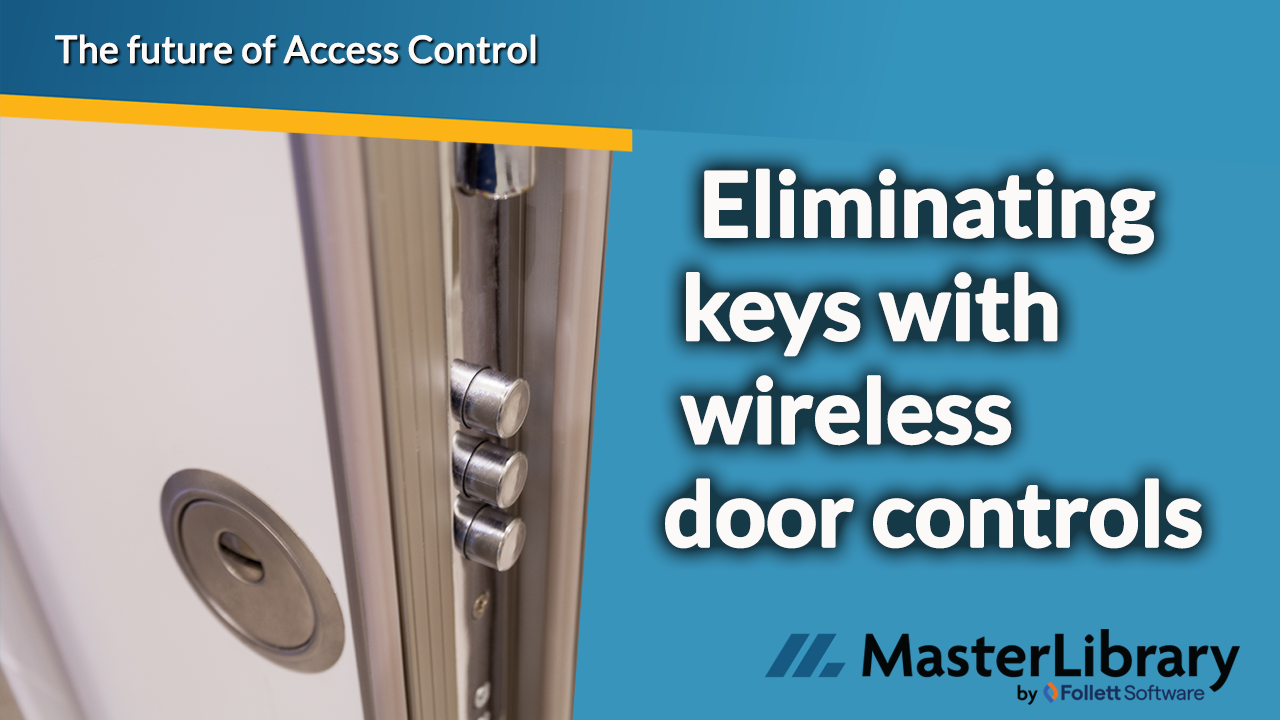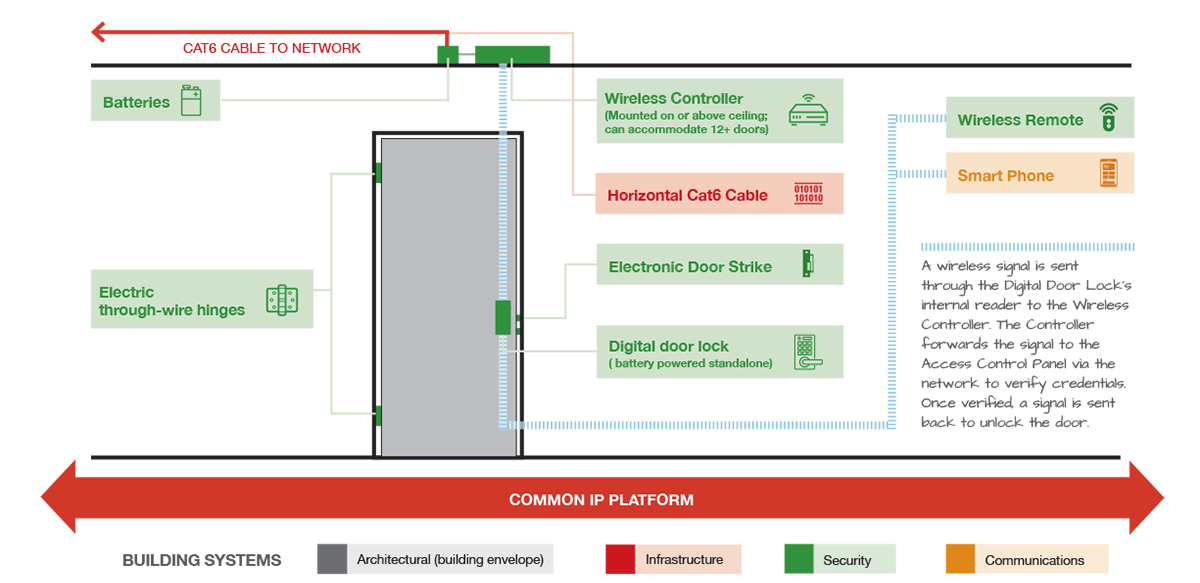Access Control at every door.
MasterLibrary
The future of Access Control systems
MasterLibrary
This newer style system covers (nearly) every door in the building using wireless battery-powered lock sets that remove the need for keys all together.
These new types of Access Control systems:
- Require additional network cabling and hardware.
- Are typically proprietary wireless receivers that live in or on ceilings and provide 12 or more doors with wireless connections.
- Monitor all wireless lock hardware with low-battery warnings.

Utilizing a full wireless Access Control system like this can provide many security and safety benefits.
- Allows doors to be locked or unlocked in emergency situations.
- Allows teacher key fobs to allow access into other classrooms only in emergency situations.
- First responder key fobs can be loaded into Knox Boxes to give 100% access to emergency personnel.
- Cleaning crews and building maintenance can automatically lock or unlock entire wings to more efficiently perform tasks.
- Districts never need to worry about the incredibly costly task of re-keying due to lost keys.
- Greatly increase building security. Any fob can be deactivated and replaced at any time rather than having the liability of lost keys.
- Rules can be set up to restrict access during particular times or days.
- Doors can be remotely operated to let in sports teams or after school activities while a manager is off site.

Newer wireless Access Control systems eliminate the need for physical keys, fobs, and cards by using battery-operated electronic door locks paired with wireless receivers. This drawing shows one door—of 12 or more—connected to the wireless controller
Being more knowledgeable about today’s school district Access Control systems helps all parties make better decisions that directly impact the safety and security of students, staff, and community.
For more information, read our 12-page eBook, The New Role of Access Control, to see how today’s K12 school security systems have become more complex and interconnected via a common IP platform.